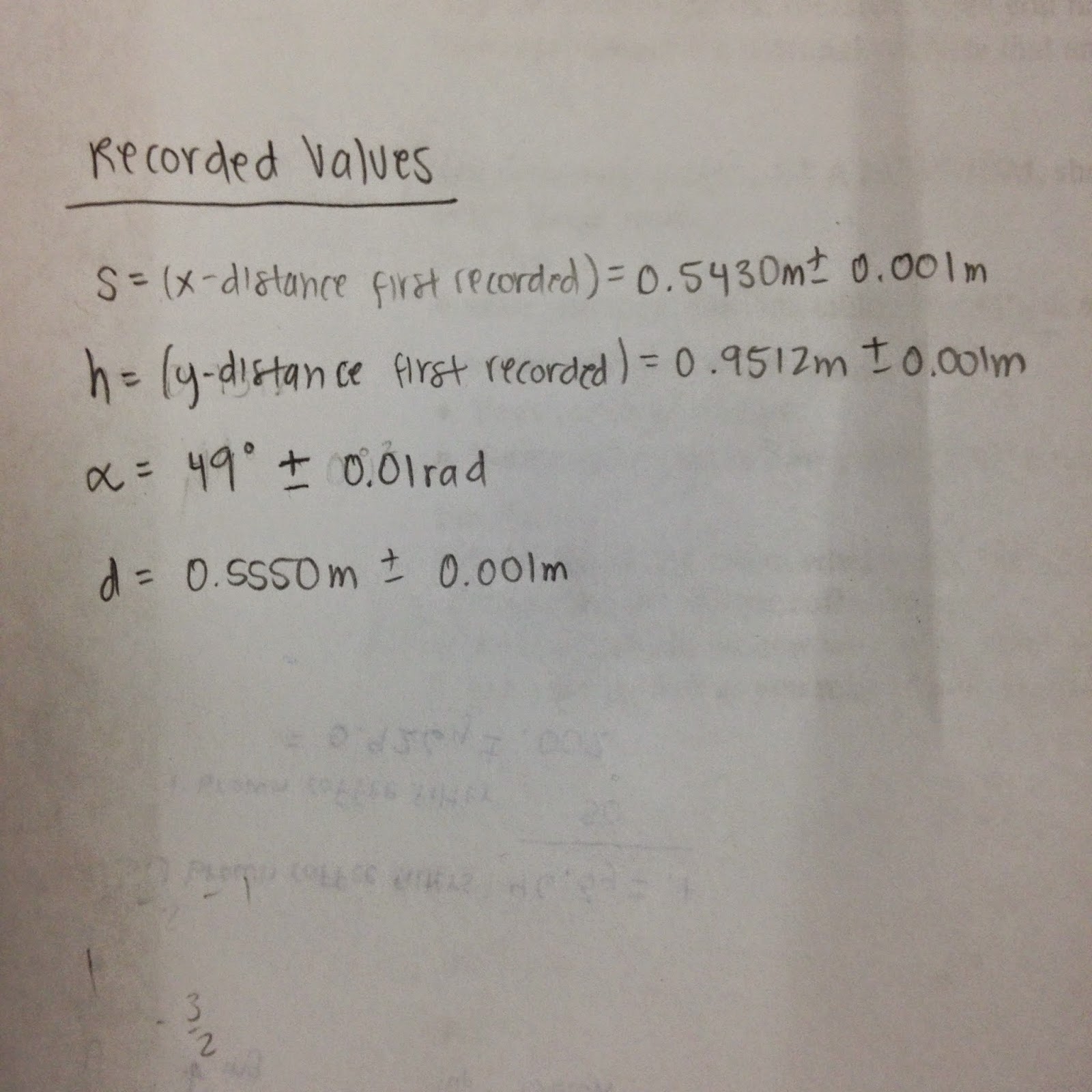Set-up: Aluminum "v-channel" is tilted so that the steel ball goes into another aluminum channel so that there is only a horizontal force when it is launched off the table onto the floor.
 |
| Table Set-up |
First we found the distance where the ball would land on the ground (not the board yet).
We placed the steel ball from a readily identifiable and repeatable point near the top of the inclined aluminum "v-channel."
Next we taped a piece of carbon paper to the floor around where the ball landed.
We then launched the ball five times from the same place as before and verified that the ball landed in around the same place each time.
We then determined the height of the bottom of the ball from where it launches to the ground, and how far out from the table's edge it lands. (We hung a string with a bobber from the edge to make sure the starting point was accurate.)
 |
| Horizontal distance of 0.543 cm |
 |
| Only the first half (in black) is relevant |
Experiment Part Two:
In this experiment, we placed an inclined board at the edge of the table such that the ball would be launched at the same spot as before, but this time it would strike the board, measuring a distance d along the board.
Using the velocity calculated in experiment one and the measured angle (alpha), we then were able to predict the distance d that the steel ball would land on the inclined piece of wood.
 |
| Only the left side is relevant |
Using the derived equation we were able to predict distance of 0.5435 meters.
Our results:
Now that we performed the experiment, the actual distance was 0.5550 meters, which had only a 2% error compared to the prediction. In making our calculations we realized there was a possibility of human error, therefore we calculated the propagated error to give us a range of possible results that the actual results would hopefully lie between.
 |
| Distance Propagated Error of Distance Derived |
 |
| Overall Propagated Error |
According to these calculations, we had a propagated error of 0.009898 meters for d.
We compared this range to the actual results.
 |
| Predicted and Actual Distances Compared |
The actual results were closer to the highest end of the actual results by two thousands of a meter even though they did not actually lie within the range. Overall our calculations allowed for pretty close and accurate results.




No comments:
Post a Comment